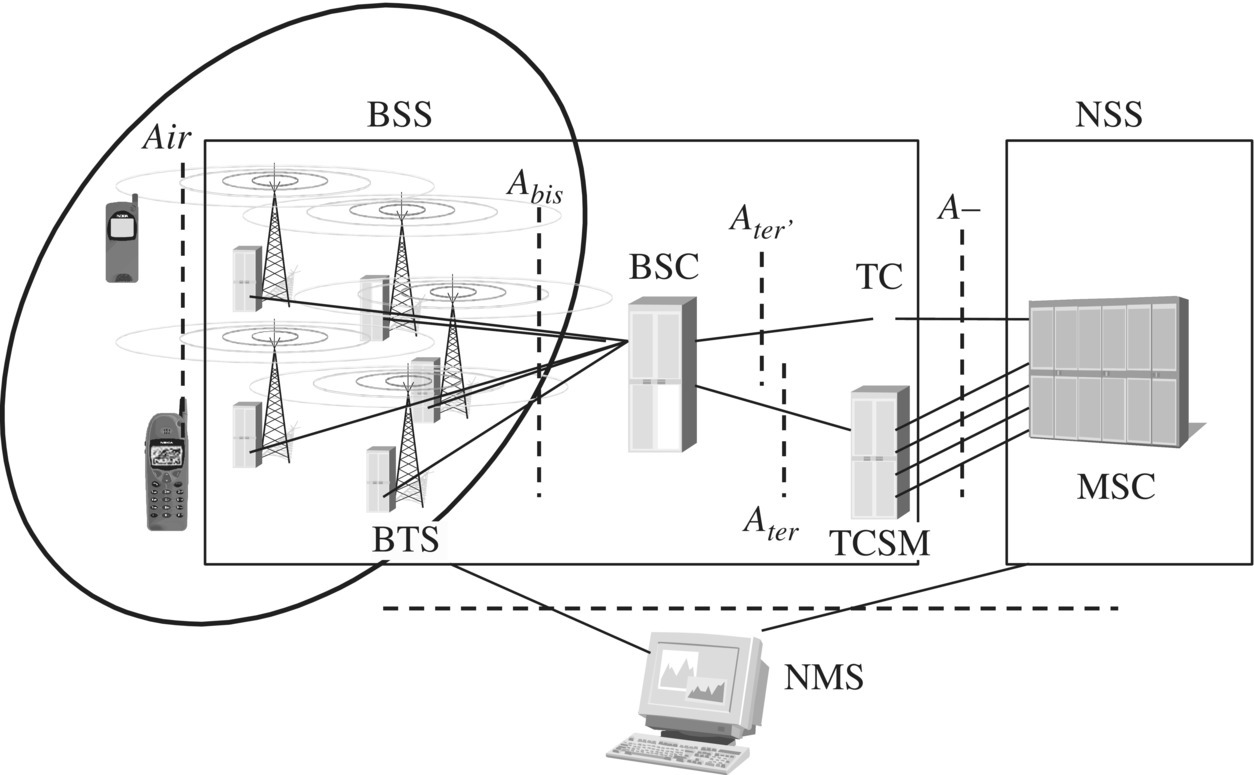2Radio Network Planning and Optimisation
Since the early days of GSM development, the GSM system network planning has undergone an extensive modification so as to fulfil the ever‐increasing demand from operators and mobile users with issues related to capacity and coverage. Radio Network planning is perhaps the most important part of the whole network design owing to its proximity to mobile users. Before going into the details of the process, we first look at some fundamental issues.
2.1 Basics of Radio Network Planning
2.1.1 Scope of Radio Network Planning
The radio network is the part of the network that includes the base transceiver station (BTS) and the mobile station (MS) and the interface between them, as shown in Figure 2.1. As this is the part of the network that is directly connected to the mobile user, it assumes considerable importance. The base station has a radio connection with the mobile and this base station should be capable of communicating with the mobile station within a certain coverage area, and of maintaining call quality standards. The radio network should be able to offer sufficient capacity and coverage for the mobile users.

Figure 2.1 Scope of radio network planning.
2.1.2 Cell Shapes
In mobile networks we talk in terms of ‘cells’. One base station can have many cells. In general, the term cell can be defined as the area covered by one sector, ...
Get Fundamentals of Network Planning and Optimisation 2G/3G/4G, 2nd Edition now with the O’Reilly learning platform.
O’Reilly members experience books, live events, courses curated by job role, and more from O’Reilly and nearly 200 top publishers.

